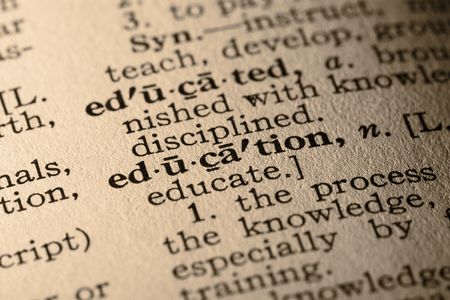在托福听力考试的备考过程中,科学美国人60秒相信大家一定用得比较多,那么大家平时是如何利用这个课外资料的呢?这里小编整理了科学美国人60秒:登山者饮用甜菜汁相关内容分享,大家一起来学习一下吧。

科学美国人60秒中英文翻译:大脑律动与音乐节拍同步
科学美国人60秒英文文本
While listening to music, you might find yourself tapping your foot or bobbing your head to the beat.
What you might not have expected is that as you listen to your favorite tune, the rhythms in your brain also follow along.
Brain rhythms arise when large groups of neurons fire together.
Previous studies have shown that listening to someone talk can elicit such activity.
Now research reveals that brain rhythms also synchronize with musical sequences.
And musical training can enhance this ability.
The study is in the Proceedings of the National Academy of Sciences.
Magnetoencelphalography, or MEG, is a technique that measures the tiny magnetic fields generated by brain activity.
Researchers used MEG to compare the brains of musicians and non-musicians while the subjects tried to detect small changes in pitch during short clips of classical piano music by composers like Bach, Beethoven and Brahms.
The trained musicians, not surprisingly, tracked the pitch changes better.
When it came to tempo, musicans and nonmusicians alike synched their brains to the music—when the music had more than one note per second.
But when faced with slower tempos, only the brains of musicians synched up.
Because speech and music share similar brain networks, it's possible that musical training thus could also improve linguistic abilities.
So pick up your instrument of choice and play away you might not feel it, but your brainwaves will dance along to your favorite song.

科学美国人60秒中文翻译:
While listening to music, you might find yourself tapping your foot or bobbing your head to the beat. 听音乐的时候,你可能发现自己会跟着音乐的节拍不时点头或动腿。
What you might not have expected is that as you listen to your favorite tune, the rhythms in your brain also follow along. 而令你意想不到的是,沉浸在自己钟情的曲调中时,你的大脑也会跟着一起律动。
Brain rhythms arise when large groups of neurons fire together. 大量的脑神经元同时活跃时就会出现大脑的律动。
Previous studies have shown that listening to someone talk can elicit such activity. 先前的研究表明听别人说话可以引发这样的活动。
Now research reveals that brain rhythms also synchronize with musical sequences. 而现在的研究表明大脑的律动也会随着音乐旋律同步产生。
And musical training can enhance this ability. 而音乐训练会提高这种能力。
The study is in the Proceedings of the National Academy of Sciences. 这项研究结果已在《美国国家科学院院刊》上发表。
Magnetoencelphalography, or MEG, is a technique that measures the tiny magnetic fields generated by brain activity. 简称MEG技术的脑磁图仪可以测量大脑活动产生的细微磁场。
Researchers used MEG to compare the brains of musicians and non-musicians while the subjects tried to detect small changes in pitch during short clips of classical piano music by composers like Bach, Beethoven and Brahms. 在接受巴赫、贝多芬以及布拉姆斯等作曲家的古典音乐片段洗礼进行鉴别音高细微差异后研究人员使用MEG技术对音乐家及非音乐人士的大脑进行比较。
The trained musicians, not surprisingly, tracked the pitch changes better. 不出意外,训练有素的音乐家更能准确地洞悉音高变化。
When it came to tempo, musicans and nonmusicians alike synched their brains to the music—when the music had more than one note per second. 而接下来的节奏环节中音乐每秒有多个音符时音乐家和非音乐人士的大脑活动都能同音乐同步。
But when faced with slower tempos, only the brains of musicians synched up. 但节奏放缓后只有音乐家的大脑才能同步。
Because speech and music share similar brain networks, it's possible that musical training thus could also improve linguistic abilities. 因为语言和音乐共享大脑类似的区域,所以音乐训练提高语言能力。
So pick up your instrument of choice and play away you might not feel it, but your brainwaves will dance along to your favorite song. 因此带上耳机,播放自己最爱的音乐,可能你感觉不到,但你的大脑正随着这些歌曲律动。
以上就是小编为大家整理的科学美国人60秒:大脑律动与音乐节拍同步的文本以及翻译,大家练习的时候还可以找来音频资料一起练习,效果定会更好。最后,小编预祝大家托福考试能取得理想的成绩。
本文部分内容来源于互联网,如有疑问请联系小站管理员进行删除。
相关资料
相关推荐
-
托福精听书籍推荐哪个
2024-02-20![托福精听书籍推荐哪个]()
-
托福阅读带做题的书籍 有什么
2023-12-15![托福阅读带做题的书籍 有什么]()
-
托福到底能考多少分?19年必练真题告诉你答案
APP专享![托福到底能考多少分?19年必练真题告诉你答案]()
-
托福考试的确认信需要打印吗
2024-03-25![托福考试的确认信需要打印吗]()
-
托福单词背诵书籍有哪些
2023-11-07![托福单词背诵书籍有哪些]()
-
提升托福听力可以看什么资料
2024-02-21![提升托福听力可以看什么资料]()
-
托福必读小说有哪些
2023-12-11![托福必读小说有哪些]()
-
托福精选资料有哪些
2023-11-01![托福精选资料有哪些]()
-
托福备考听力推荐什么教材
2023-11-20![托福备考听力推荐什么教材]()
-
自学托福看什么教材
2023-11-16![自学托福看什么教材]()
-
托福阅读口语资料推荐书籍
2024-02-18![托福阅读口语资料推荐书籍]()
-
托福书籍去哪买
2024-02-23![托福书籍去哪买]()
-
小托福备考用书有哪些
2023-11-15![小托福备考用书有哪些]()
-
托福基础读写教材有哪些
2023-08-10![托福基础读写教材有哪些]()
-
考托福必备的听力书籍
2024-01-31![考托福必备的听力书籍]()
-
考托福阅读 应该看什么类型的书
2023-11-20![考托福阅读 应该看什么类型的书]()
-
托福阅读口语资料推荐
2023-09-25![托福阅读口语资料推荐]()
-
托福进阶听力教材有哪些
2023-05-29![托福进阶听力教材有哪些]()
-
托福口语书籍类型有哪些
2023-09-21![托福口语书籍类型有哪些]()
-
杭州托福资料哪家正规
2023-06-25![杭州托福资料哪家正规]()
-
初学托福教材推荐哪个
2023-10-19![初学托福教材推荐哪个]()






















